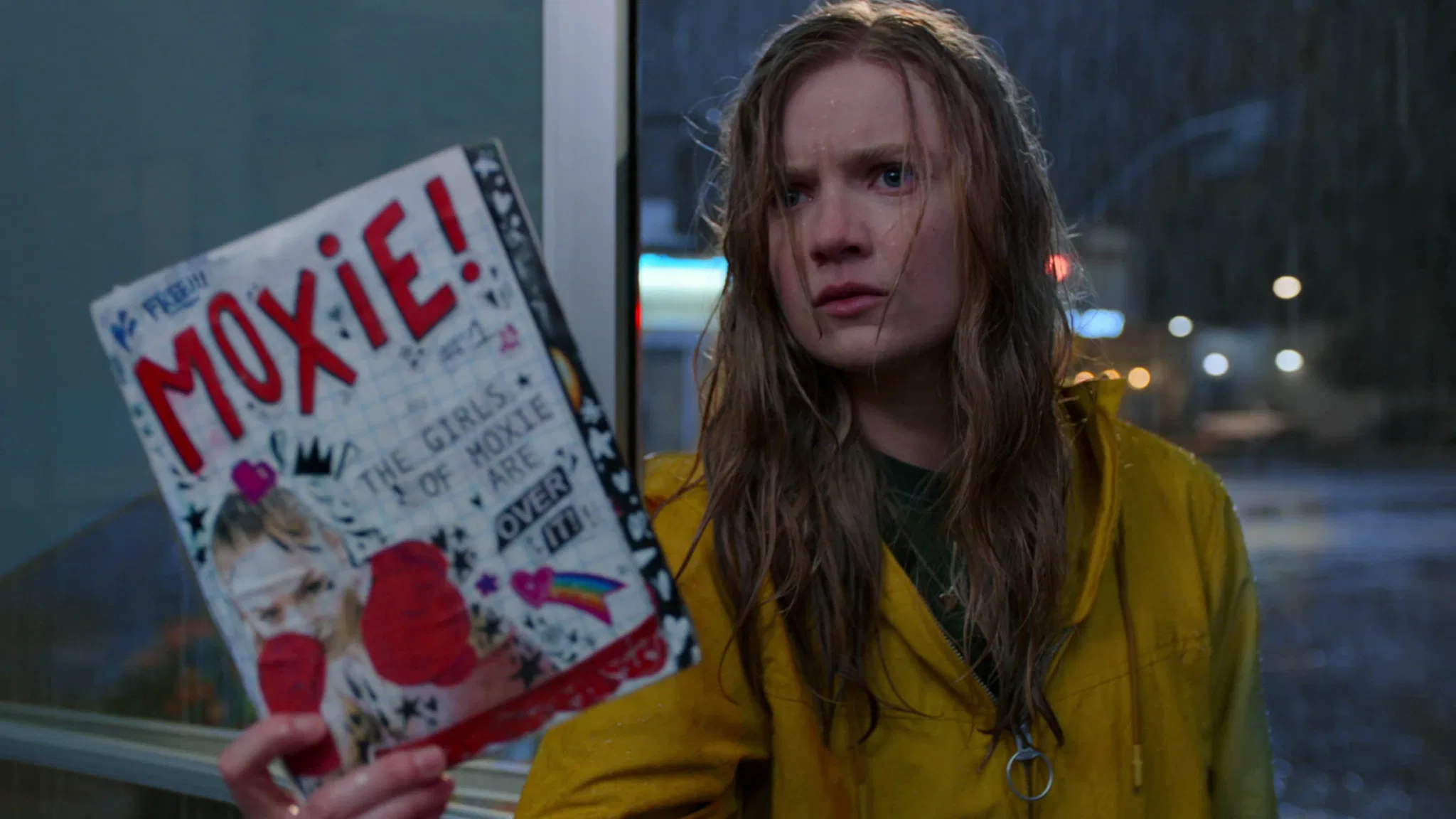I have been pretty late to the Moxie bandwagon, and I wonder why I have been avoiding it all the while. I have been too strict with my definition of ‘social issue’ and ‘feminist cinema.’ How might a bunch of rebellious teenagers revolting in an American high school be relevant to my definition of intersectional feminism? How do our political beliefs align? I was probably too fast to judge, for my thoughts took a turn after watching the film. I thoroughly enjoyed it and, much to my dismay, related to it. I revisited the similar experiences that I had, studying at a co-ed school in a small city in India.
Moxie is a 2021 teen drama directed by Amy Poehler, which revolves around a bunch of young women maneuvering their way around sexism in their high school. Much has been written on Moxie, including its succumbence to stereotypes in the name of diversity and inclusion. A lot of those arguments make sense. But for a 22-year-old, hailing from a small city, the film sang to me with memories from my school days.
Dress up or die!
The year was 2010. Our class teacher was calling out the names for attendance as I stood outside the room. I was punished. Oh, the humiliation of standing outside the classroom, head bowed. But this time around, it was not because of overgrown nails or dirty shoes. I was reprimanded for not wearing stockings/cycling shorts (I took the bus, though). It took me a while to wrap my head around the ‘why’ of it. A couple of years later, it got worse. All the girls were made to wear leggings, and a specific length for their skirts/pinafores was determined. Girls who wore their skirts above the knees were publicly humiliated by the principal in the assembly. According to our principal, these were girls from ‘bad’ homes who were ‘asking for it.’
I still remember when one of my classmates was humiliated in front of her father, a clerk employed at our school. We did not see her for the rest of the term. Like Kaitlynn (played by Sabrina Haskett) was sent home for wearing a tank top, I, too, clearly remember a classmate who was body-shamed to the extent of missing out on an entire school year. This appropriation of sexuality by controlling the way one chose to dress, intensified in our adolescent years. Growing up, there were odd snippets of such incidents. We were kids, and freedom was conflated with our innocence. But past a certain age, there was no space for freedom for the girls in the school curriculum.
Also read: Why Do School Dress Codes End Up Sexualising Young Girls?
One might also recall the trope of ‘good’ and ‘bird’ girl; young, impressionable individuals were pitted against each other and conditioned by the patriarchal order to believe that one was better than the other. It was a reminder issued for the rest of our lives; while the former shall be lauded, the latter shall always be scorned. It has taken me years of learning to look past these prejudices that I have grown up with, and I am still in the process. The good-bad dichotomy also reflects how boys understand their female counterparts; rather than looking at them as peers they have grown up with, they start seeing them within the brackets of ‘nice’ or ‘someone to mess around with.’
Stories of Assault
Toward the end of the film Emma (played by Josephine Langford) reveals that her ex-boyfriend, school’s favorite jock Mitchell (played by Patrick Schwarzenegger), raped her. It is misfortunate how many women would be able to empathize and relate to such incidents.
More than once, I remember raising similar – if not the same – complaints in school. Harassment – verbal and otherwise – appeared to be a common feature in my school. Several of us were eve-teased and inappropriately touched by our peers. On more than one instance, complaints were raised against teachers and technicians employed at the school. Those words of resistance, though, never left the principal & staff quarters. Young women were chided, hushed, and at most, warned against interacting with the accused. Some fairly considerate teachers sympathized with us. But that is where it ended. Our stories remained within the confines of the classroom, as a legacy for the batches to come, while our scarred selves struggled to sail through, hoping we were the last ones with the said narratives.
The Way Forward?
One of the most important facilities that many schools miss (trust me, that swimming pool is unnecessary and no one needs a Chinese section in the Canteen) is a strong grievance redressal mechanism. Many schools and universities still lack an Internal Complaints Committee to deal with sexual harassment. The impact of sexual harassment, verbal abuse, bullying, etc. on young children transcends beyond their school years. It often scars them for the rest of their lives and affects the way they see & manage their personal & professional relationships. It is also imperative that schools host sensitization programs for their faculty and staff. We need a safe, affirming space that can foster young people’s emotional and mental growth and make the crucial years of their lives enjoyable.
Also read: St Francis College, Hyderabad Takes Body Policing To A New Level
Sanchita Dwivedi is a Women Studies scholar at the Tata Institute of Social Sciences, Mumbai. She can be found playing with dogs and drinking copious amounts of coffee, when not on bed wallowing in pandemic woes. You can find her on Instagram.
Featured Image Source: Moxie screen grab




